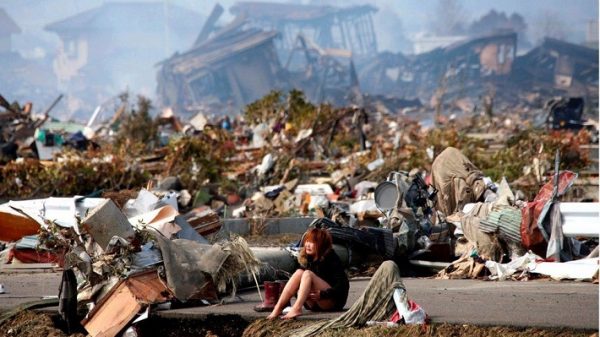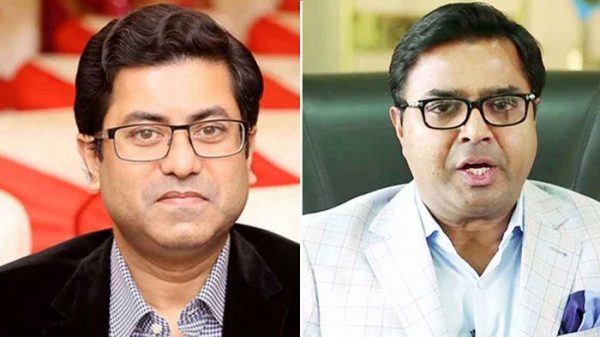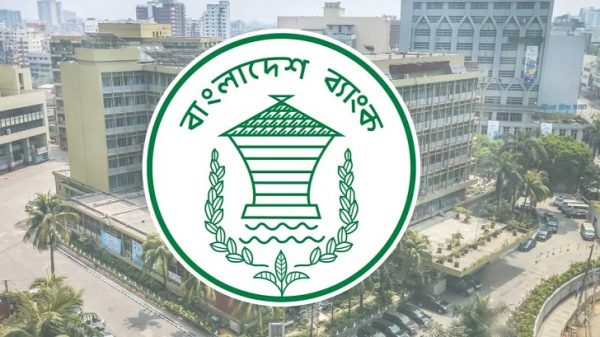Fukushima disaster: What happened at the nuclear plant?

Shawdesh Desk:
Ten years ago, on a Friday afternoon in March, the most powerful earthquake ever recorded in Japan struck off the country’s eastern coast.
The 9.0-magnitude quake was so forceful it shifted the Earth off its axis. It triggered a tsunami which swept over the main island of Honshu, killing more than 18,000 people and wiping entire towns off the map.
At the Fukushima nuclear power plant, the gigantic wave surged over defences and flooded the reactors, sparking a major disaster. Authorities set up an exclusion zone which grew larger and larger as radiation leaked from the plant, forcing more than 150,000 people to evacuate from the area.
A decade later, that zone remains in place and many residents have not returned. Authorities believe it will take up to 40 years to finish the work, which has already cost Japan trillions of yen.
Where is the plant?
The Fukushima Daiichi Nuclear Power Plant is in the town of Okuma, in Fukushima Prefecture. It sits on the country’s east coast, about 220km (137 miles) north-east of the capital Tokyo.
On 11 March 2011 at 14:46 local time (05:46 GMT) the earthquake – known as the Great East Japan Earthquake, or the 2011 Tohoku earthquake – struck east of the city of Sendai, 97km north of the plant.
Residents had just 10 minutes warning before the tsunami hit the coast.
Overall almost half-a-million people were forced to leave their homes as a result of the earthquake, tsunami and nuclear accident.
What happened at Fukushima?
Systems at the nuclear plant detected the earthquake and automatically shut down the nuclear reactors. Emergency diesel generators turned on to keep coolant pumping around the cores, which remain incredibly hot even after reactions stop.
But soon after a wave over 14 metres (46ft) high hit Fukushima. The water overwhelmed the defensive sea wall, flooding the plant and knocking out the emergency generators.
Workers rushed to restore power, but in the days that followed the nuclear fuel in three of the reactors overheated and partly melted the cores – something known as a nuclear meltdown.
The plant also suffered a number of chemical explosions which badly damaged the buildings. Radioactive material began leaking into the atmosphere and the Pacific Ocean, prompting the evacuations and an ever-widening exclusion zone.
How many people were hurt?
There were no deaths immediately during the nuclear disaster. At least 16 workers were injured in the explosions, while dozens more were exposed to radiation as they worked to cool the reactors and stabilise the plant.
Three people were reportedly taken to hospital after high-level exposure.
Long-term effects of the radiation are a matter of debate. The World Health Organization (WHO) released a report in 2013 that said the disaster will not cause any observable increase in cancer rates in the region. Scientists both inside and outside Japan believe that aside from the region immediately around the plant, the risks of radiation remain relatively low.
But many believe the dangers are far greater, and residents remain wary. Though officials have lifted restrictions in many areas most people have not returned to their homes. In 2018, the Japanese government announced that one worker had died after exposure to radiation and agreed his family should be compensated.
A number of people are however confirmed to have died in the evacuation, including dozens of hospital patients who had to be moved due to fears of radiation.
The Fukushima Disaster is classified as a level seven event by the International Atomic Energy Agency, the highest such event and only the second disaster to meet this classification after Chernobyl.
Who was at fault?
Critics blamed the lack of preparedness for the event, as well as a muddled response from both the plant operator Tokyo Electric Power (Tepco) and the government.
An independent investigation set up by Japan’s parliament concluded that Fukushima was “a profoundly man-made disaster”, blaming the energy company for failing to meet safety requirements or to plan for such an event. However, in 2019 a Japanese court cleared three former Tepco executives of negligence in what was the only criminal case to come out of the disaster.
In 2012, Japan’s then prime minister Yoshihiko Noda said the state shared the blame for the disaster. A court ruled in 2019 that the government bore partial responsibility and should pay compensation to evacuees.
How is the clean up going?
Ten years later, several towns in north-eastern Japan remain off limits. Authorities are working to clean up the area so residents can return.
Major challenges remain. Tens of thousands of workers will be needed over the next 30 to 40 years to safely remove nuclear waste, fuel rods and more than one million tons of radioactive water still kept at the site.
But some residents have decided never to return because they fear radiation, have built new lives elsewhere or don’t want to go back to where the disaster hit.
Media reports in 2020 said the government could start to release the water – filtered to reduce radioactivity – into the Pacific Ocean as early as next year.
Some scientists believe the huge ocean would dilute the water and that it would pose a low risk to human and animal health. Environmental group Greenpeace however said that the water contains materials that could potentially damage human DNA.
Officials have said no final decision has been taken about what to do with the liquid.




























Leave a Reply